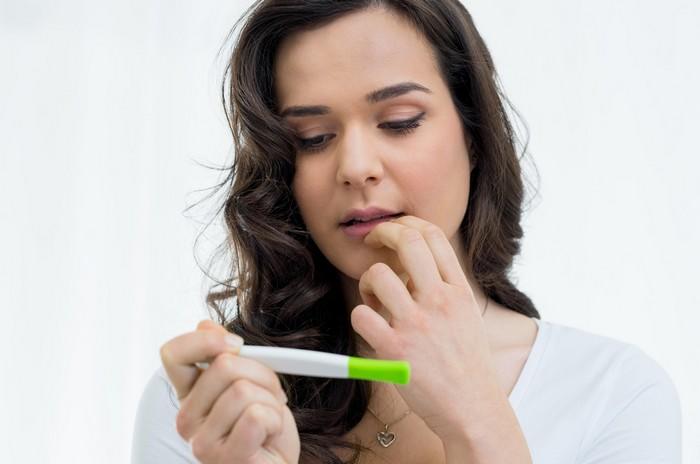After giving birth, many women may wonder how to determine if they are ovulating. Understanding ovulation is essential for those who wish to conceive again or simply want to monitor their reproductive health. This article will explore the signs of ovulation, the factors affecting it after childbirth, and methods to track ovulation effectively.
Understanding Ovulation Postpartum
Ovulation is the process by which an ovary releases an egg. This event typically occurs about halfway through a woman’s menstrual cycle. However, after giving birth, a woman’s body goes through numerous changes that can affect her menstrual cycle and ovulation patterns.
The Postpartum Period
The postpartum period refers to the time after childbirth. It includes several physiological and hormonal changes as the body returns to its pre-pregnancy state. During this time, many women experience irregular menstrual cycles, which can make it difficult to identify ovulation.
Hormonal Changes
After delivery, hormone levels fluctuate significantly. Estrogen and progesterone levels drop sharply, leading to the return of menstruation. However, the timing can vary widely among women. Breastfeeding can further affect these hormonal levels, delaying the return of regular ovulation and menstruation.
When Does Ovulation Return?
The timing of the return of ovulation can differ based on various factors, including whether you are breastfeeding.
Breastfeeding and Ovulation
Breastfeeding affects hormone production, especially prolactin, which inhibits ovulation. Many women who exclusively breastfeed may not ovulate for several months, and some may experience anovulation (the absence of ovulation) for longer periods.
Formula Feeding
For mothers who formula feed, ovulation may return more quickly. Some women may notice a return of their menstrual cycle as early as six weeks postpartum, while others may take several months.
Signs of Ovulation After Birth
Recognizing the signs of ovulation can help women determine when they are most fertile. Here are some common indicators to watch for after giving birth.
Changes in Menstrual Cycle
As your menstrual cycle resumes, pay attention to any changes. Regular cycles often indicate that ovulation is occurring. Most women have cycles that range from 21 to 35 days.
Cycle Length
If your cycle becomes regular and falls within this range, it may suggest that ovulation is occurring.
Basal Body Temperature
Tracking your basal body temperature (BBT) can help identify ovulation.
Temperature Rise
A slight increase in BBT, usually around 0.5 to 1 degree Fahrenheit, often indicates that ovulation has occurred. This rise typically lasts until the start of your next menstrual period.
Cervical Mucus Changes
Cervical mucus undergoes changes throughout the menstrual cycle.
Egg White Consistency
During ovulation, cervical mucus becomes clear, stretchy, and resembles raw egg whites. This change signals high fertility and indicates that ovulation is likely occurring.
Ovulation Pain
Some women experience ovulation pain, also known as mittelschmerz.
Location of Pain
This discomfort is often felt on one side of the lower abdomen and can vary in intensity. Not everyone experiences ovulation pain, but it can be a sign that ovulation is occurring.
Ovulation Predictor Kits
For more precise tracking, consider using ovulation predictor kits (OPKs).
How OPKs Work
These kits measure the levels of luteinizing hormone (LH) in your urine. A surge in LH typically occurs 12 to 36 hours before ovulation. Using OPKs can help pinpoint your fertile window.
Factors Influencing Ovulation After Birth
Several factors can affect the return of ovulation after childbirth.
Individual Variability
Every woman’s body is different. Some may resume regular cycles quickly, while others may take longer. Factors such as genetics, health, and previous reproductive history can influence this process.
Breastfeeding Patterns
The frequency and duration of breastfeeding can also impact the timing of ovulation. Exclusive breastfeeding tends to suppress ovulation more effectively than partial breastfeeding.
Overall Health and Nutrition
A woman’s overall health and nutritional status can affect her hormonal balance and, consequently, her ovulation. A balanced diet, regular exercise, and adequate rest are essential for maintaining reproductive health.
Stress Levels
High stress levels can disrupt hormonal balance, potentially delaying the return of ovulation. Finding ways to manage stress, such as through relaxation techniques, yoga, or support groups, can be beneficial.
Tracking Your Ovulation Effectively
If you want to conceive after giving birth or just want to understand your cycles better, consider these tracking methods.
Charting Your Cycle
Keep a journal of your menstrual cycle, noting the start and end dates, symptoms, and any changes. This method can help you identify patterns over time.
Using Apps
Several smartphone applications can help track your menstrual cycle and ovulation. These apps often provide reminders for when to test for ovulation and can analyze your cycle length and patterns.
Consulting Your Healthcare Provider
If you have concerns about your ovulation or menstrual cycle after childbirth, don’t hesitate to reach out to your healthcare provider. They can offer insights, conduct necessary tests, and provide guidance tailored to your situation.
Conclusion
Understanding ovulation after childbirth is essential for women who want to conceive again or monitor their reproductive health. By recognizing the signs of ovulation, tracking cycles, and considering individual factors, women can better navigate their fertility journeys. While the return of ovulation can vary significantly among women, being informed and proactive can empower you to make the best choices for your reproductive health. Always consult with a healthcare provider if you have any concerns or questions regarding your cycles or overall well-being.
Related topics:



























